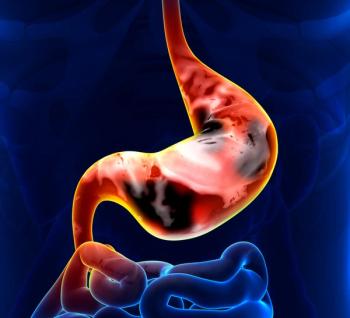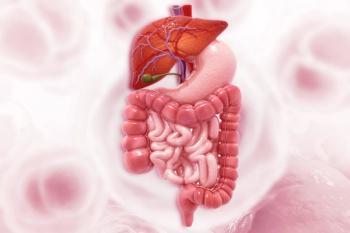
Oncology NEWS International
- Oncology NEWS International Vol 15 No 8
- Volume 15
- Issue 8
Intermittent FOLFIRI Equal to Continuous FOLFIRI in Advanced Colorectal Cancer
FOLFIRI can be given intermittently in advanced previously untreated colorectal cancer, with survival rates and toxicity similar to continuous FOLFIRI
ASCO FOLFIRI can be given intermittently in advanced previously untreated colorectal cancer, with survival rates and toxicity similar to continuous FOLFIRI, according to Italian investigators who presented their findings at the 42nd Annual Meeting of the American Society of Clinical Oncology (abstract 3505). Principal investigator Roberto Labianca, MD, of the Ospedali Riuniti, Bergamo, Italy, reported the results on behalf of the Italian Group for the Study of Digestive Tract Cancer (GISCAD). He said that intermittent, or alternating, chemotherapy might delay the appearance of cell resistance and be less burdensome on patients.
The GISCAD trial enrolled 331 advanced colorectal cancer patients from 27 centers. Patients were randomized to either intermittent FOLFIRI (irinotecan [Camptosar] 180 mg/m2 on day 1 plus l-folinic acid 100 mg/m2 over 2 hours plus 5-FU 400 mg/m2 bolus plus 600 mg/m2 by 22-hour infusion on days 1 and 2 every 2 weeks), for 2 months on and 2 months off, or to continuous FOLFIRI every month.
In the intermittent arm, patients showing response or disease stabilization after 2 months (four administrations) of FOLFIRI then discontinued chemotherapy for 2 months before restarting for another 2 months. In the continuous FOLFIRI arm, patients received FOLFIRI for 2 months, were evaluated, and then received another 4 months of chemotherapy. Patients were switched to a second-line regimen upon disease progression. (More than half the patients received second-line oxaliplatin [Eloxatin]-based therapy.) The median duration of treatment was 4 months for all patients: four cycles for the intermittent treatment arm and eight cycles for the continuous treatment arm.
By intent-to-treat analysis, the overall response rates were similar, at 33.6% for the intermittent arm and 36.5% for the continuous arm, including complete responses of 4.2% and 3.0%, respectively. Stable disease was seen in 31.4% and 35.1% of patients, respectively, while disease progression occurred in 35.0% and 28.4%. At 30 months median follow-up, median overall survival was 16.9 months for intermittent FOLFIRI and 17.6 months for continuous FOLFIRI. Progression-free survival was 6.2 and 6.5 months, respectively.
Events have numbered approximately two-thirds of those required for the final analysis, Dr. Labianca noted. "I think, looking at the shape of the survival curves, that at the final analysis these results will probably be confirmed," he predicted.
Toxicity was minimal and similar between treatment arms, with less than 5% of patients in each arm experiencing grade 3-4 diarrhea, nausea, vomiting, mucositis, and alopecia. Hematologic toxicity was also rare, with fewer than 4% in each arm developing severe neutropenia, thrombocytopenia, or anemia.
"We can cautiously conclude at this point that intermittent FOLFIRI is not inferior to continuous FOLFIRI in terms of both progression-free and overall survival, but we await further analysis," Dr. Labianca said. "GISCAD is planning further studies of the intermittent strategy that will include biologicals."
Articles in this issue
over 19 years ago
Younger Age at Brain Tumor Diagnosis Portends Poor Emotional Outcomeover 19 years ago
Triple Targeted Therapy Is Tested in Pts With Solid Tumorsover 19 years ago
FDA Approves Three-Drug Combination Tablet for HIV-1over 19 years ago
Side Effects Persist 16 Years After Prostate Ca Brachytherapyover 19 years ago
No Significant QOL Differences for Raloxifene and Tamoxifenover 19 years ago
Amrubicin Appears Promising in Small-Cell Lung Cancerover 19 years ago
R-MP Active in Older Pts With Newly Diagnosed Myelomaover 19 years ago
Sunitinib and Sorafenib Active in Phase II Advanced NSCLC Trialsover 19 years ago
Takeda Signs Agreement With Galaxy Biotech for HuL2G7Newsletter
Stay up to date on recent advances in the multidisciplinary approach to cancer.

















































































